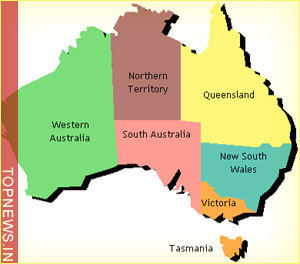Linz shakes off industrial image to unveil cultural side
 Linz, Austria - The Austrian city of Linz is easily overlooked on the route between picture-perfect Salzburg to imperial Vienna.
Linz, Austria - The Austrian city of Linz is easily overlooked on the route between picture-perfect Salzburg to imperial Vienna.
The city on the Danube has no grand alpine panorama, no historic Baroque charm and gone are the days of the romantic horse-drawn carriages. The city's main claims to fame are Linzer Torte or cake and its role in Adolf Hitler's exorbitant architectural plans.
But authorities in Linz are bent on changing this image and preparations are underway to become joint European Capital of Culture in 2009 with the Lithuanian capital Vilnius.
Linz has plenty of industry, but it also has an extensive cultural scene and an attractive city centre.
Overlooking the city is St. Martin's Church with a fresco dating from 1440 depicting the crucifixion of Christ.
It is probably the oldest example of Linz' international connections. "It shows the Holy Face of Lucca in Italy. Nobody knows how it got here, " says city guide Birgit Plainer.
A merchant probably saw the original in Lucca and had a copy made for Linz, which thanks to its location on a bend on the Danube, has been a hub of transport and commerce for centuries.
"This was once the largest marketplace in Austria," says Plainer as she gazes across Linz' main square.
Houses line the square's perimeter, jostling with each other for space - evidence of a former property crisis.
"Every merchant wanted to have a good address right on the market square and that explains why it looks this way today."
Many of the buildings in the old city centre now house craftspeople and art galleries.
The jewellery designer, Sieglinde Almesberger, has a shop in Hofgasse where she creates and sells necklaces, armbands and rings using stones from the Danube and silver that reflects Linz' steel-making tradition.
"Fifteen years ago I would take my small son for walks along the Danube and collect pebbles. Then I had the idea of making jewellery with them," recalls Ellenberger.
The river Danube is not really appreciated in Linz, she believes. "When I see how rivers are utilised in other cities I would say that Linz has forgotten the river a little."
The role of the main transport artery has been taken over by the motorway that brings about 10,000 commuters into Linz every day.
"Linz has more places of employment than residents," says mayor Franz Do Busch.
Companies such as steel maker, Voestalpine, or the chemical concern Chemie Linz have helped the city become a key industrial hub in Austria.
Artists who want to establish Linz as a centre of the arts, however, meet with plenty of resistance from within the local community.
The acclaimed Lentos Art Museum on the river bank is known locally as the "Shoe Box". "Many people have complained that the building's reflective exterior dazzles them," says Paltinger.
The city's annual Ars Electronica media festival, which focuses on current affairs, is popular among foreign guests, but only a few young Linz residents attend the event.
"If there is one thing I would wish to give Linz in the year of European Capital of Culture, it would be a greater international perspective," says Ulrich Fuchs, the deputy chairman of Linz 09 which is organizing and financing the cultural programme.
One of the organization's objectives is to bring the people of Linz closer to art and culture away from provincialism and narrow-mindedness.
"The average person in Linz is open to strange and new things," says Fuchs. The exhibition The Cultural Capital of the Fuhrer, focusing on Linz' National Socialist past, evidences this and has drawn above-average crowds.
The exhibition also shows that Linz is unafraid of confronting a period of its history that it is not proud of. Hitler went to school in Linz and had plans to turn the city into a cultural attraction.
The city on the Danube is home to the steel plant, Reichswerke Hermann Goering, which supplied Hitler's war machine and today exists as the Voestalpine steel company.
Air raids by the Allies destroyed vast sections of Linz during World War II and for decades it struggled with its image as a grey, industrial city.
But environmental protection laws, investment in culture and reconnection to its earlier history of great names such as Anton Bruckner, who played the cathedral's organ, are slowly beginning to bear fruit.
"I think Linz is a very, very undervalued city," says the mayor. So 2009 will give this modest city an opportunity to surprise Europe and show that it is far more than merely the home of Linzer Torte.
Internet: www. linz09. at, www. linz. at. (dpa)
